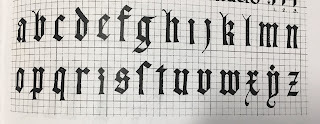Before the beginning of the Polish People's Republic, Poland had been subjected to numerous policies of cultural extermination as well as suppression by the Nazis. After the end of World War II, Poland's new leaders, the Soviets, would also implement their own version of this.
Soviet suppression can be seen in early propaganda posters, marked by the realistic art form of the poster. These posters were used to help welcome the ideals of Communism, and to limit the artistic expression of the Polish people. Typically these posters only promoted communistic ideas, messages which had been approved by a censor, or they represented the government/people. These posters were created up until 1956, the end marked by both a more liberal regime led by Władysław Gomułka, as well as Joseph Stalin's death.
The year 1956 marked the beginning of new types of Polish poster art, as Soviet realism was no longer the only art form accepted. New predominantly western art styles appeared onto posters such as: geometric, abstract, minimalism, and surrealism. These styles were then promoted through major poster art schools such as: the Warsaw Polytechnic Institute, as well as the Warsaw Academy of Fine Arts. The Warsaw Polytechnic Institute would favor the geometric approach, while the Warsaw Academy of Fine Arts would favor more of a painterly one. Artists graduating from these schools were influenced in these new styles, leading to the bloom of new poster art. On top of it all, artists experienced more artistic freedom due to the new centralized film distribution authority. It was widely believed that once a film was approved by a censor, there was little to no need to have the film poster censored.
While artists had more artistic freedom, this did not remove them entirely from censorship. Artists were not allowed to be overly political, nor were they allowed to criticize the government. To overcome this hurdle, artists highlighted their emotions and criticisms through symbolism. While it was not enough to get censored, it called for the Polish people to think for themselves.
Citation:
Pillardy, P. (2014, November 05). The Politics of Polish Poster Art under Communism.
Retrieved April 1, 2019, from https://curatedhams.wordpress.com/2014/11/05/the-politics-of-polish-poster-art-under-communism/










